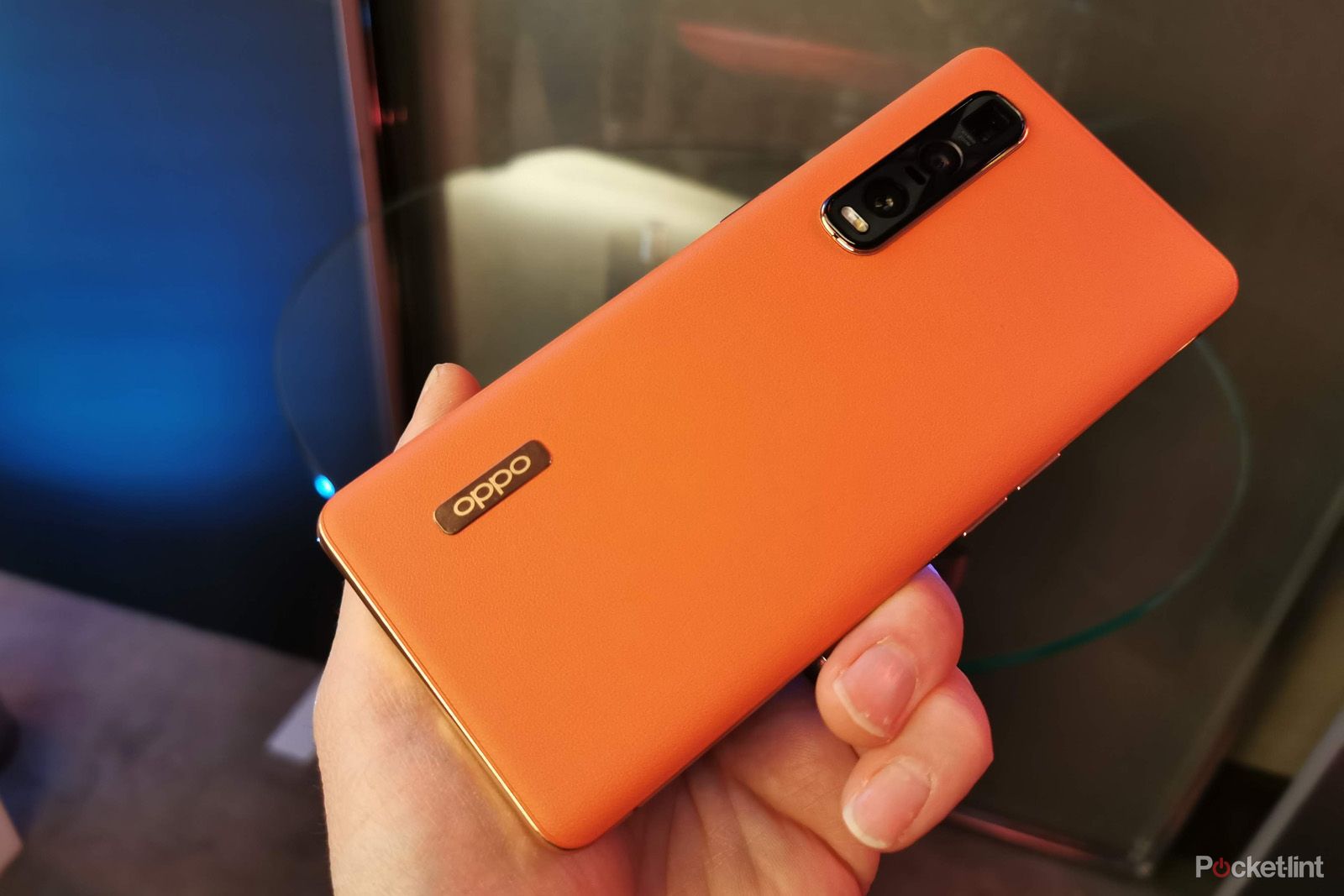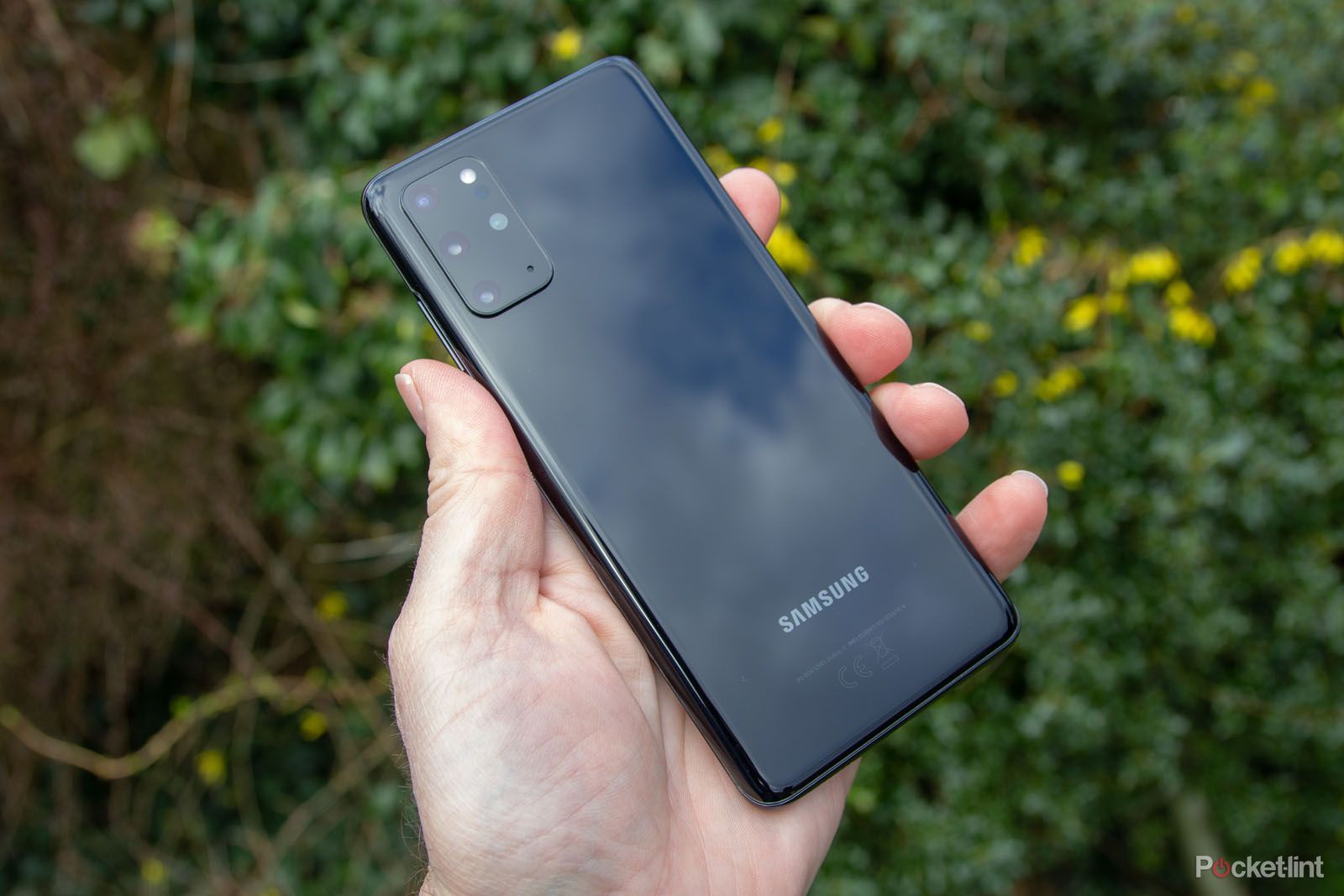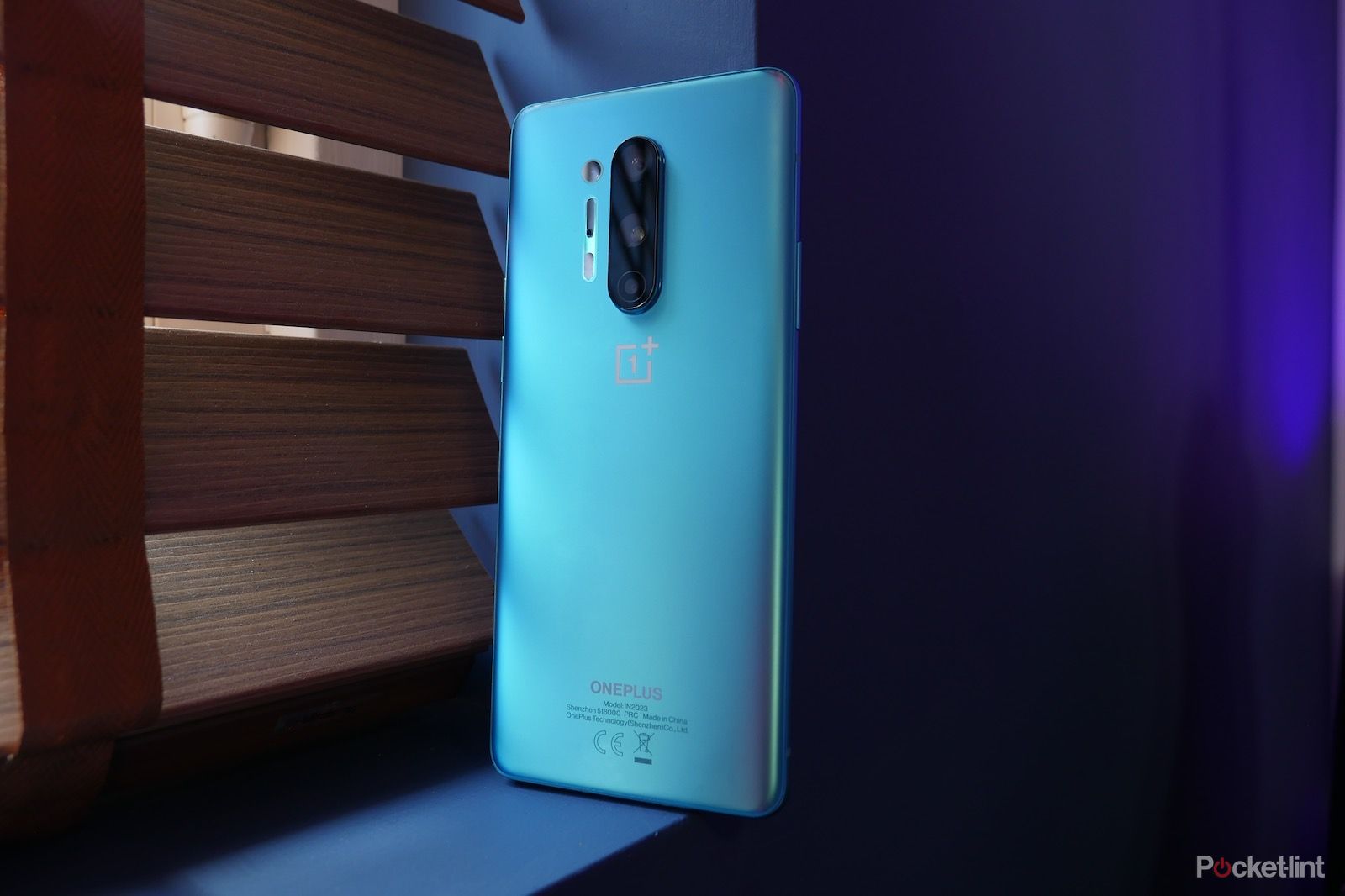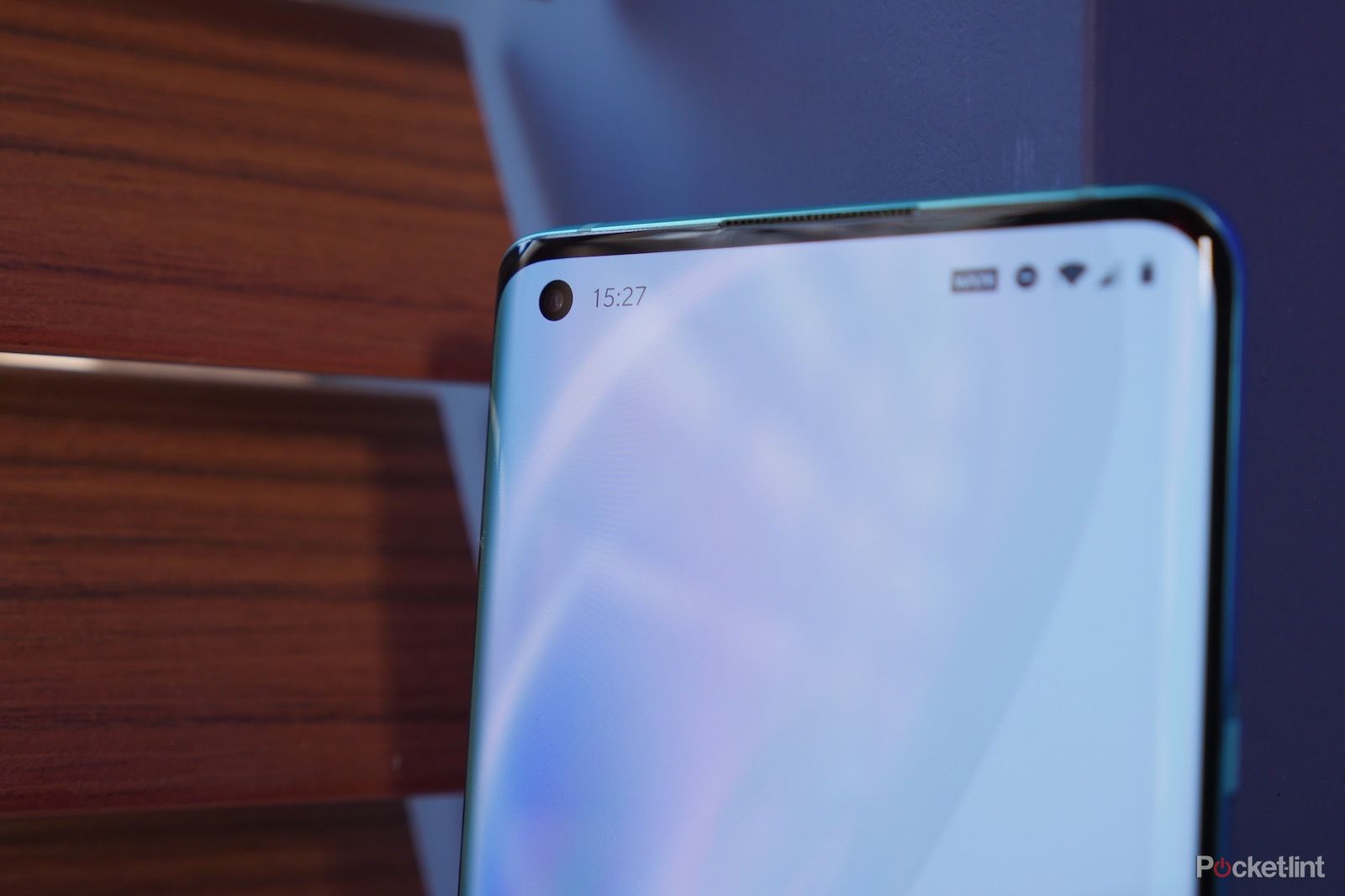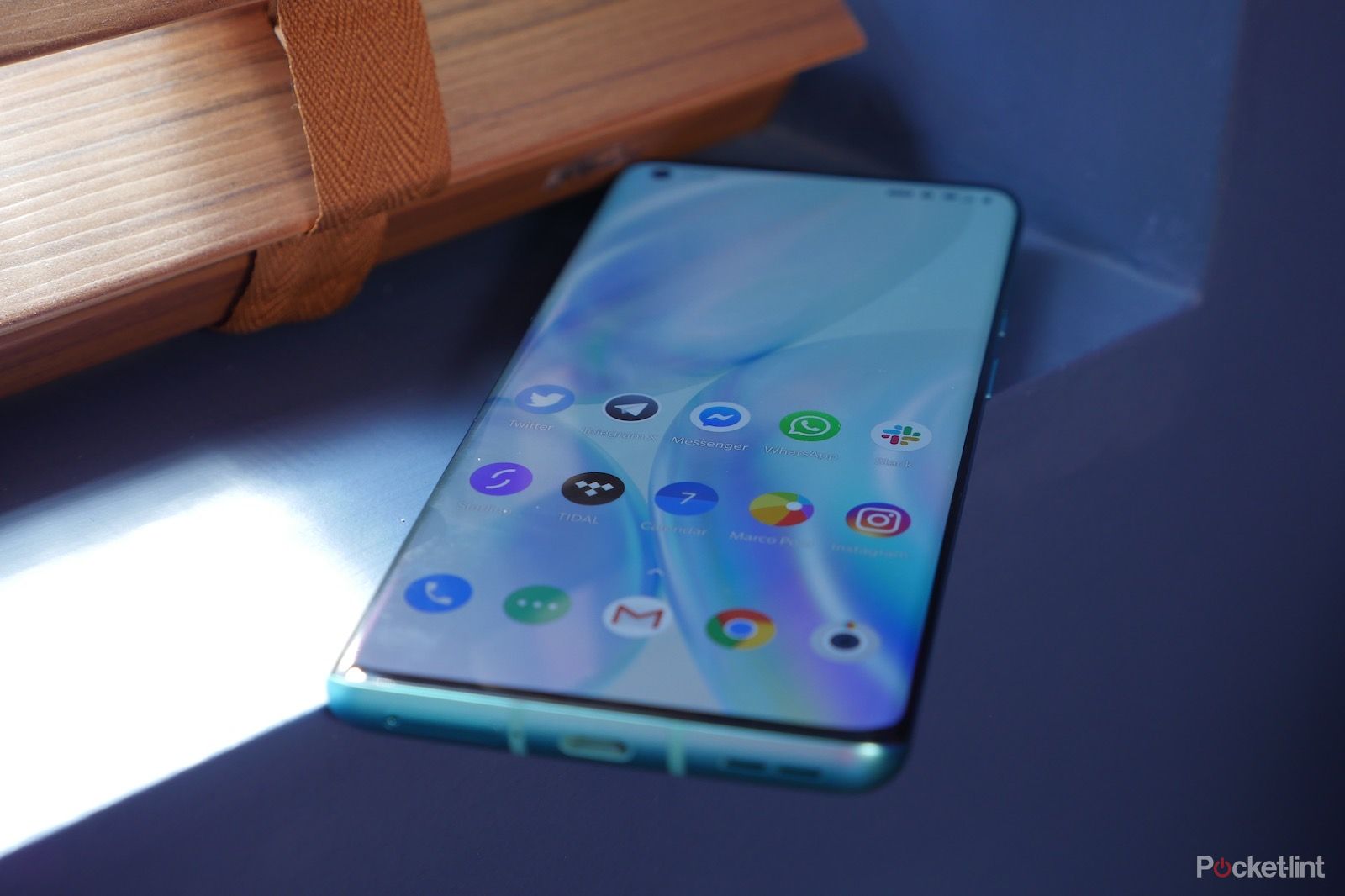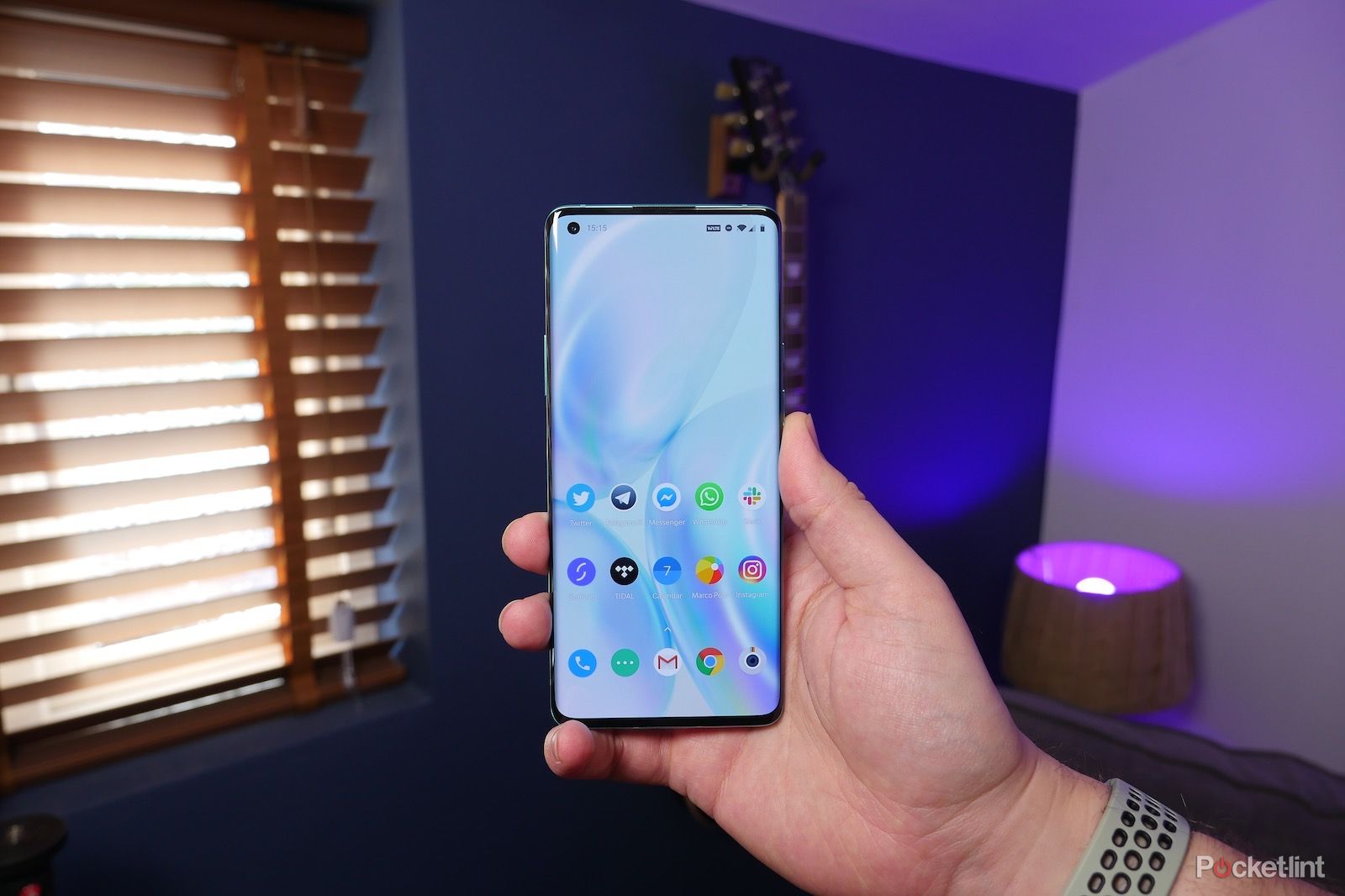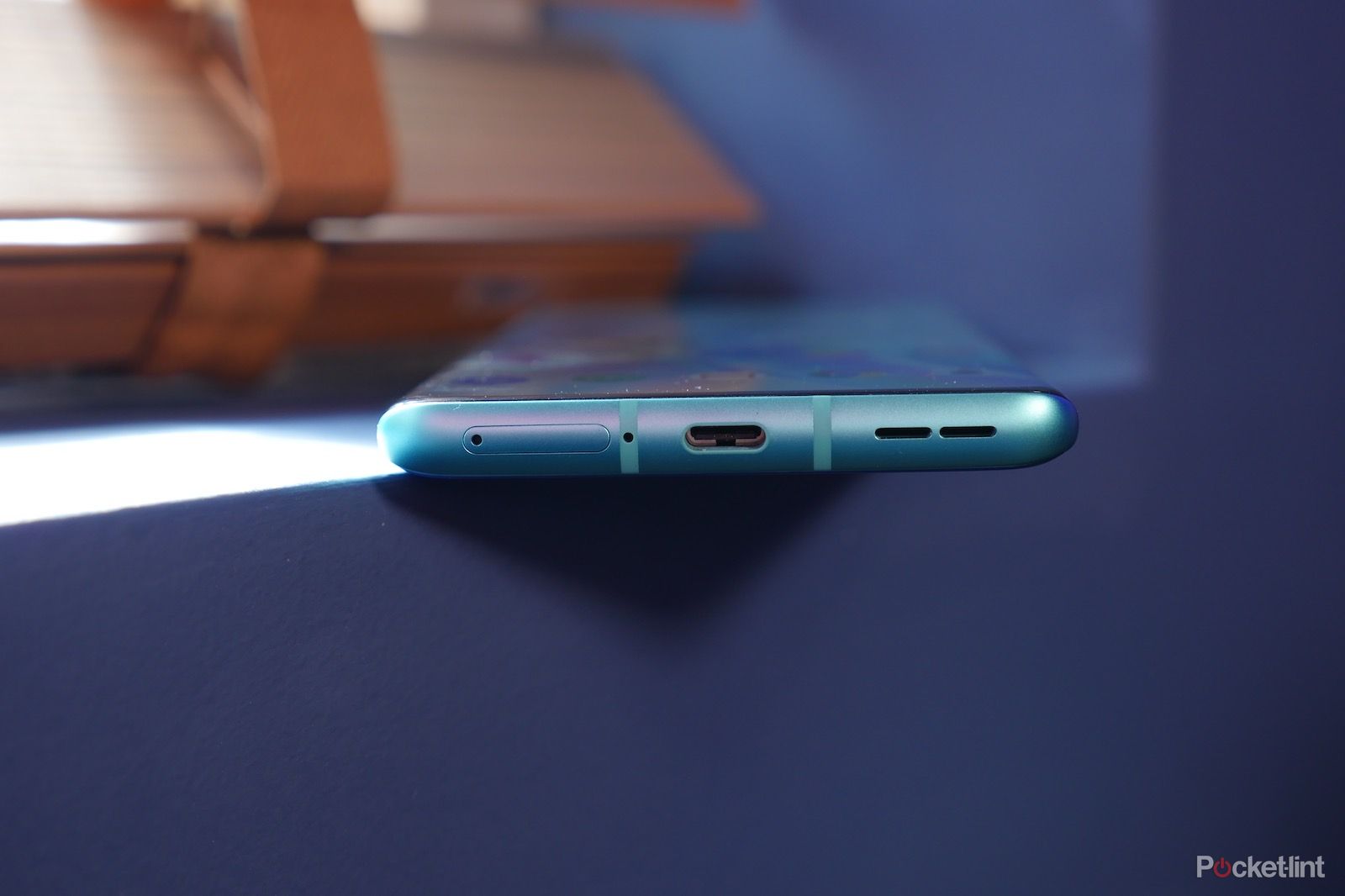OnePlus has come a long way since its early days. It was once a no-name brand that built hype by offering high-performance for a very low price point, and could only be bought if you had an invitation. Today, however, you'll see OnePlus devices listed in popular retail stores and available from major carriers. It's broken out of its niche and become a trailblazer.
For 2020 it's all about the OnePlus 8. And it's the Pro model that's the company's biggest phone yet - both literally and in significance - because it adds features that we've been wanting for years. Namely: wireless charging and a proper water-resistance rating.
But while the consistency of offering top-drawer power hasn't changed, the once tiny price point is a thing of the past. If you want Pro then you'll have to pay flagship rates for it. But OnePlus has earned its place at the top of the stack. Here's why.
Our quick take
The OnePlus 8 Pro is undoubtedly the company's most complete smartphone to date. It has a big and brilliant display, long-lasting and fast-charging battery, IP68 waterproofing, plus software that's fluid and lightweight. All in a phone that's fast, and has a great main and wide-angle camera on the back.
While the spec list is undoubtedly impressive, there are some extras here that seem like box-ticks: the colour filter camera seems like it's only there for the claim of quad, the telephoto camera isn't class-leading either, while not all will see the benefit of a 120Hz screen. Still, three small complaints in an otherwise impressive innings.
The OnePlus 8 Pro delivers a true flagship experience that offers everything you could want, in a package that's still less expensive than its big-name competition.
Alternatives to consider
Oppo Find X2 Pro
Oppo Find X2 Pro
OnePlus 8 Pro and Oppo Find X2 Pro share a lot of similarities, but there are some notable differences to consider. Oppo has that epic telephoto zoom lens in the camera, plus a glorious vegan leather option, and even faster wired charging. It is more expensive though.
Samsung Galaxy S20+
Samsung Galaxy S20+ 128GB (5G)
Another similar phone with a lot of similar features, but this time with the weight of Samsung's brand behind it. Again, it'll cost you more, but it is a very accomplished smartphone.
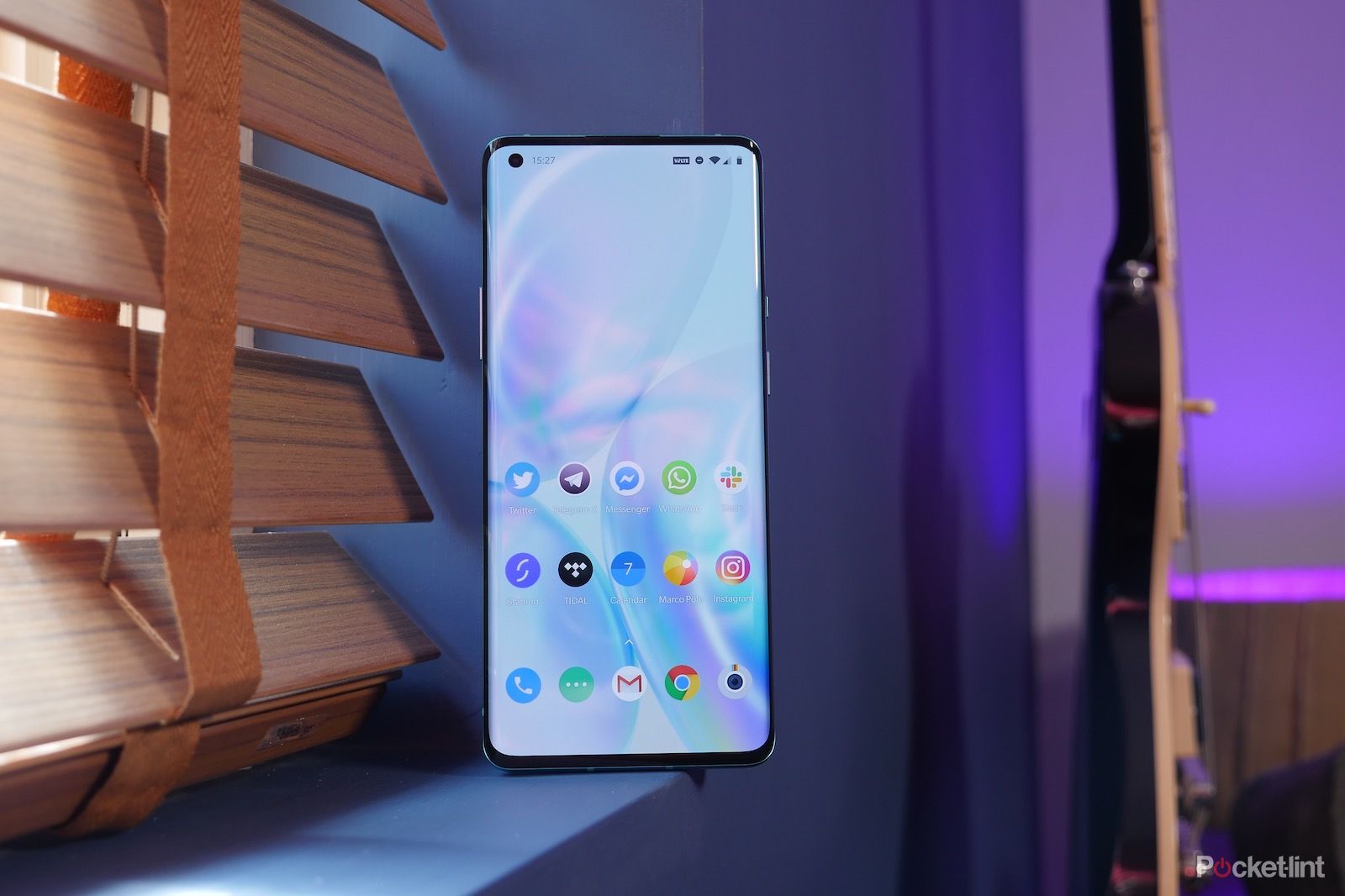
OnePlus 8 Pro - 4.5 / 5
| FOR | AGAINST |
|---|---|
|
|
OnePlus 8 Pro
Design
- Dimensions: 165.3 x 74.35 x 8.5mm / Weight: 199g
- Finishes: Onyx Black and Glacial Green
- In-display fingerprint sensor
- Curved glass both sides
- IP68 waterproofing
The OnePlus 8 Pro is big. That's the first thing we noticed when taking it out of its packaging. It's noticeably bigger than the 7T Pro from 2019, and almost identical in size and shape to the Oppo Find X2 Pro (no surprise, as both companies are found under the BBK Electronics umbrella).
The 8 Pro is clearly an evolution. As in previous years, OnePlus' glass back is available in both glossy and frosted matte finishes. The former in black, the latter in what the company is calling Glacial Green - which is essentially teal or turquoise. You'll be able to buy a rough sandstone finished bright teal case to go with it, if you so decide.
The camera housing is kept in the middle to make it symmetrical, retaining that pill-shaped look of the previous OnePlus 7 Pro although this time it's joined by an LED flash and a fourth camera, which are completely flush built with the glass. It kinda spoils that minimal symmetry OnePlus is known for, plus it sticks out further than before, but we still prefer it to having a big rectangle off to one side.
Our review unit is the frosted Glacial Green model, which means the aluminium edges have a soft-touch anodised finish to go along with that matte glass look. It's a lovely colour, one that's standout compared to most other 2020 flagships.
It's equipped with all the usual OnePlus buttons and ports too. That means there's an alert slider on the right (which is smaller than before), which is a quick way to switch your notifications off, without having to unlock your phone and find the relevant settings.
Beneath that switch is what we would usually call the power/sleep button: pressing it locks the phone as usual, but long-pressing launches the Google Assistant by default. To power down the phone, you press-and-hold the volume up and lock button together. OnePlus probably realised people rarely switch off their phones these days, so having the built-in assistant was a more sensible choice.
Display
- 6.78-inch Fluid AMOLED display (120Hz refresh rate)
- QuadHD+ resolution (3168 x 1440)
- MEMC motion graphics smoothing
- Punch-hole camera cut-out
On the front there's that all dominating 6.78-inch AMOLED screen. OnePlus has made quite a fuss about the display in the 8 Pro, which is no surprise. After all, it's got a Quad HD+ resolution and a 120Hz refresh rate.
This time around OnePlus has opted against a pop-up camera in the top edge, which means the selfie camera now lives in a little cutout in the display's top left corner. So it's not a fully uninterrupted display surface any more. However, the panel does take up almost all of the front, giving an edge-to-edge feel, plus it curves towards the edges to minimise the view of the frame up the sides too.
By default the OnePlus 8 Pro is set to Full HD+ resolution at 60Hz. In the settings this can be changed to Quad HD+ at 120Hz. With these settings we've noticed the user interface seems extra smooth, such as when switching apps and scrolling through the screens. If you're upgrading from a OnePlus phone from two or three years ago, this is something you'll definitely notice.
However, most games, TV shows and movies aren't available in 120Hz to take full advantage of the higher refresh rate. To our eyes, honestly we found it hard to tell the difference between 60Hz and 120Hz most of the time. OnePlus has always made phones feel fast and fluid, so it still feels quick and responsive even in its lower standard refresh rate.
To try and upscale from lower frame rates, OnePlus uses MEMC motion enhancing technology. The idea being that videos look smoother than if they're just in their regular 30fps/25fps/24fps (or whatever the frame-rate is on that particular video). Again, this is off by default, and works with a handful of video focused apps, including Netflix.
The thing is, like with changing the frame rates, we found that switching on MEMC didn't seem to do all that much. It's not easy to spot its benefit when just chilling and watching your favourite shows. Watching an episode of Star Trek Discovery, activating and deactivating MEMC, we didn't recognise any impact or benefit.
On the other hand, we could tell the difference between Full HD+ and Quad HD+ resolutions when switching between the two. While you can't distinguish individual pixels easily, the edges of objects on screen seem sharper and text is a little crisper in Quad HD mode.
It's all too easy to get lost in all these headline-grabbing features, but step away from the mountains of numbers and, overall, the 8 Pro's screen is one of the best displays we've seen to date. It's incredibly bright at full brightness. Colours have a real pop and vividness to them without getting massively oversaturated. At lower brightnesses there's a little too much contrast, making some scenes appear unrealistic, but on the whole, it's up there with the top displays on the market.
Performance & Battery
- Snapdragon 865 processor, 8GB or 12GB RAM (LPDDR5)
- 4,510mAh battery, 30W charging (wireless and wired)
- 128GB or 256GB UFS 3.0 storage
- 5G and Wi-Fi 6 connectivity
Performance is one area where OnePlus excels - and has consistently. Inside, you'll find the very fastest mobile components. Everything from the Snapdragon 865 processor, to the latest generation RAM, and ultra-fast storage, is all designed to keep this phone feeling blazing fast. And it shows.
In daily use, everything about the phone's interface feels zippy and fluid, from launching apps to just scrolling through the app drawer. There's not even a micro-second of delay or lag. The software being so light and bloat-free only helps keep things further.
Even loading games with fast animations and high-quality visuals doesn't seem to bother the OnePlus 8 Pro. We played a good few rounds of Asphalt 9, Alto's Odyssey and Mario Kart Tour, never spotting any lag or stuttering whatsoever. Even with the display maxed out at 120Hz and Quad HD+ resolution, it didn't struggle with anything.
The same can be said of the battery life. It's a 4,510mAh cell, making it the biggest capacity battery OnePlus has used in a smartphone to date. That means it can keep on going and going. Even on days where we deliberately spent a good couple of hours gaming, watching videos and streaming music, we arrived at the end of the day with just under 40 per cent left over. For the lighter user, we suspect the Pro isn't far off being a two day battery.
With its fast-charging technology, there's no reason not to at least try and see how long you can make it go. With either the wired Warp Charge 30T or the Warp Charge 30 Wireless charging, you can top it up again in no time. From 0-50 per cent using the cable takes about 23 minutes, which isn't long at all.
It's similar with the new wireless charging technology if you use OnePlus' optional wireless charging stand. Having left the phone off charge overnight, we placed it on the stand at around 38 per cent. After just ten minutes it was up to 58 per cent. That's enough to get through a full day.
The long and short of it: this phone is really fast, can keep up with you even on the most demanding days, and charging is super fast.
Camera
-
Four camera system:
- Main: 48-megapixels, Sony IMX689 sensor, f/1.78 aperture, optical stabilisation (OIS)
- Wide: 48MP, Sony IMX586 sensor, f/2.4, 119.7-degree angle of view
- Zoom: 8MP, 3x optical, f/2.4, OIS
- Colour filter: 5MP, f/2.4
- 16MP front-facing camera (punch-hole)
- Ultra-HD (4K) video at 60fps
- Slow-mo to 460fps
For OnePlus, the camera is usually the "it's a great phone but could be better" caveat. For the OnePlus 8 Pro, however, for the most part its ironed out issues from its predecessors. No, it's still not perfect, but it doesn't have any serious flaws and is steps ahead of its predecessors.
Using either the main 48-megapixel camera or the ultra-wide 48-megapixel camera, you'll get images with plenty of life. There's lots of colour, contrast and detail from both of those two cameras. Indeed, the wide-angle sensor here is the same quality one that you'll find in the standard OnePlus 8's main camera setup.
Even in low-light conditions, the primary camera does a good job of pulling in lots of light. Parts of the images get a bit smushy and soft, but no more than we'd expect. Switching to Nightscape mode, however, and this issue is resolved: the colours have pop, details are sharper, and shadows/contrast are a bit more prominent.
There are two additional cameras, only one of which is really useful: the 3x zoom. This telephoto allows you to zoom into subjects further away, making the system more versatile. However, the quality isn't quite there with the zoom camera.
Compared to the wide and ultra-wide, the images are flat and washed out, lacking a little sharpness - especially as you push towards the higher zoom range. Seeing as there's great performers like the Huawei P40 Pro, that highlights this result even more.
As for the fourth camera, that may as well not be there. It's a colour filter camera, which you can use when you select the relevant filter in 'Photo' mode. It does unusual things with colours, turning images grey and orange (mostly). Again, however, the results lack a lot in detail and dynamic range. It feels completely like a gimmick to us, for the sake of saying "it's a quad camera phone". We'd rather OnePlus had stuck the telephoto camera in the primary camera housing with the other two, and not interrupted the beautiful green glass surface with it, just to put in a fourth camera that doesn't seem to do anything useful.
OnePlus 8 Pro
To recap
Undoubtedly the company's most complete smartphone to date. It has a big, brilliant display, long lasting and fast-charging battery, plus software that's fluid and lightweight. All in a phone that's fast, and actually has a good main camera on the back.

